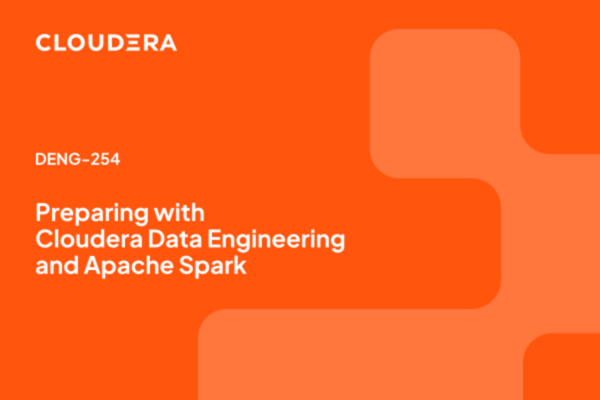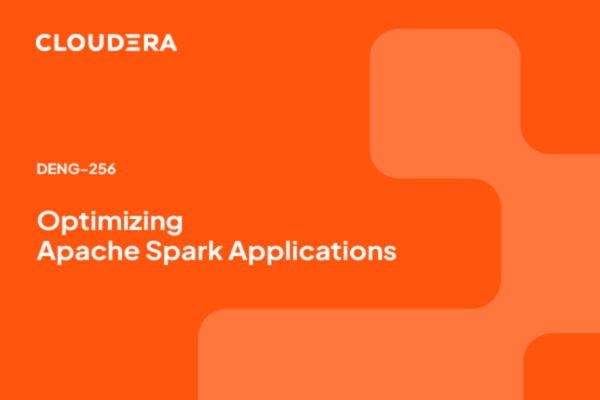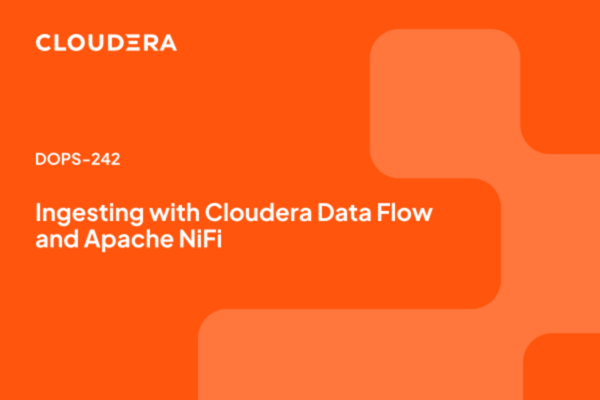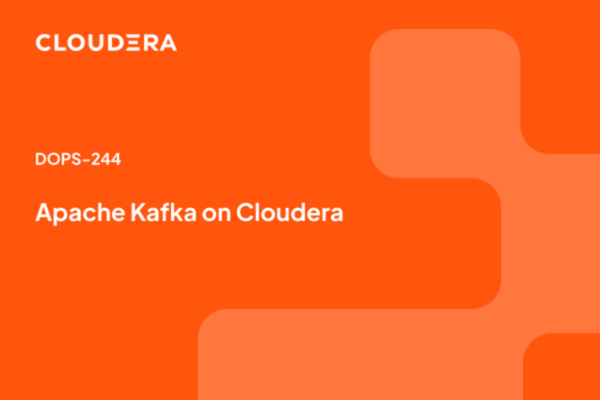Upcoming Sessions
-
January
5
ILT - ADMIN-332: Securing Cloudera on premises - 4791732
Starting:2026/01/05 @ 09:00 AM SofiaEnding:2026/01/08 @ 05:00 PM Sofia -
January
5
ILT - ADMIN-230: Administering Cloudera on premises - 4791707
Starting:2026/01/05 @ 09:00 AM CairoEnding:2026/01/08 @ 05:00 PM Cairo
See All Upcoming Sessions

Cloudera is a fully integrated edge to AI product set. Cloudera Manager is purposely built as the DevOps tooling for building and managing the Cloudera platform. This four-day hands-on course presents detailed explanation, comprehensive theory, key skills, and recommended practices for successful platform administration. Upon completion of this course a Cloudera Administrator will learn the full range of functionality and capability of Cloudera Manager. DATE: January 19th-22nd, 2026 Virtual Classroom, AMER 8:00 - 16:00 (CST) Read more

This four-day hands-on training course delivers the key concepts and knowledge developers need to use Apache Spark to develop high-performance, parallel applications on the Cloudera Data Platform. Hands-on exercises allow students to practice writing Spark applications that integrate with Cloudera Data Platform core components. Participants will learn how to use Spark SQL to query structured data, how to use Hive features to ingest and denormalize data, and how to work with “big data” stored in a distributed file system. After taking this course, participants will be prepared to face real-world challenges and build applications to execute faster decisions, better decisions, and interactive analysis, applied to a wide variety of use cases, architectures, and industries. Download full course description What you'll learn During this course, you will learn how to: Distribute, store, and process data in a cluster Write, configure, and deploy Apache Spark applications Use the Spark interpreters and Spark applications to explore, process, and analyze distributed data Query data using Spark SQL, DataFrames, and Hive tables Deploy a Spark application on the Data Engineering Service What to expect This course is designed for developers and data engineers. All students are expected to have basic Linux experience, and basic proficiency with either Python or Scala programming languages. Basic knowledge of SQL is helpful. Prior knowledge of Spark and Hadoop is not required. DATE: May 11-14, 2026 9:00 - 17:00 (CEST TIMEZONE) Virtual Classroom, EMEA Read more

This three-day hands-on training course delivers the key concepts and expertise developers need to optimize the performance of their Apache Spark applications. During the course, participants will learn how to identify common sources of poor performance in Spark applications, techniques for avoiding or solving them, and best practices for Spark application monitoring. Optimizing Apache Spark Applications presents the architecture and concepts behind Apache Spark and underlying data platform, then builds on this foundational understanding by teaching students how to tune Spark application code. The course format emphasizes instructor-led demonstrations illustrate both performance issues and the techniques that address them, followed by hands-on exercises that give students an opportunity to practice what they've learned through an interactive notebook environment. Download full course description This course is designed for software developers, engineers, and data scientists who have experience developing Spark applications and want to learn how to improve the performance of their code. This is not an introduction to Spark. Spark examples and hands-on exercises are presented in Python and the ability to program in this language is required. Basic familiarity with the Linux command line is assumed. Basic knowledge of SQL is helpful. DATE: April 22-24, 2026 9:30 - 17:30 (SGT TIMEZONE) Virtual Classroom, APAC Read more

This four-day hands-on training course delivers the key concepts and knowledge developers need to use Apache Spark to develop high-performance, parallel applications on the Cloudera Data Platform. Hands-on exercises allow students to practice writing Spark applications that integrate with Cloudera Data Platform core components. Participants will learn how to use Spark SQL to query structured data, how to use Hive features to ingest and denormalize data, and how to work with “big data” stored in a distributed file system. After taking this course, participants will be prepared to face real-world challenges and build applications to execute faster decisions, better decisions, and interactive analysis, applied to a wide variety of use cases, architectures, and industries. Download full course description What you'll learn During this course, you will learn how to: Distribute, store, and process data in a cluster Write, configure, and deploy Apache Spark applications Use the Spark interpreters and Spark applications to explore, process, and analyze distributed data Query data using Spark SQL, DataFrames, and Hive tables Deploy a Spark application on the Data Engineering Service What to expect This course is designed for developers and data engineers. All students are expected to have basic Linux experience, and basic proficiency with either Python or Scala programming languages. Basic knowledge of SQL is helpful. Prior knowledge of Spark and Hadoop is not required. DATE: March 30 - April 2, 2026 9:30 - 17:30 (SGT TIMEZONE) Virtual Classroom, APAC Read more

One of the most critical functions of a data-driven enterprise is the ability to manage ingest and data flow across complex ecosystems. Does your team have the tools and skill sets to succeed at this? Apache NiFi and this four-day course provides the fundamental concepts and experience necessary to automate the ingress, flow, transformation, and egress of data using NiFi. The course also covers tuning, troubleshooting, and monitoring the dataflow process as well as how to integrate a dataflow within the Cloudera CDP Hybrid ecosystem and external systems. Download full course description What you'll learn During this course, you learn how to: Define, configure, organize, and manage dataflows Transform and trace data as it flows to its destination Track changes to dataflows with NiFi Registry Use the NiFi Expression Language to control dataflows Optimize dataflows for better performance and maintainability Connect dataflows with other systems, such as Apache Kafka, Apache Hive, and HDFS Utilize the Data Flow Service What to expect This course is designed for developers, data engineers, administrators, and others with an interest in learning NiFi’s innovative no-code, graphical approach to data ingest. Although programming experience is not required, basic experience with Linux is presumed, and previous exposure to big data concepts and applications is helpful. DATE: March 24-27, 2026 9:30 - 17:30 (SGT TIMEZONE) Virtual Classroom, APAC Read more

This four-day instructor-led course begins by introducing Apache Kafka, explaining its key concepts and architecture, and discussing several common use cases. Building on this foundation, you will learn how to plan a Kafka deployment, and then gain hands-on experience by installing and configuring your own cloud-based, multi-node cluster running Kafka on the Cloudera Data Platform (CDP). You will then use this cluster during more than 20 hands-on exercises that follow, covering a range of essential skills, starting with how to create Kafka topics, producers, and consumers, then continuing through progressively more challenging aspects of Kafka operations and development, such as those related to scalability, reliability, and performance problems. Throughout the course, you will learn and use Cloudera’s recommended tools for working with Kafka, including Cloudera Manager, Schema Registry, Streams Messaging Manager, and Cruise Control. DATE: March 10-13, 2026 9:30 - 17:30 (SGT TIMEZONE) Virtual Classroom, APAC Read more
Shopping Cart
Your cart is empty
